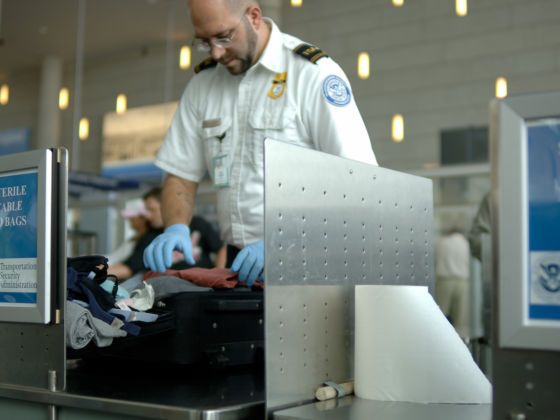The number of travelers passing through US airports is slowly increasing. The Transportation Security Administration’s checkpoint travel numbers went from an abysmal 87,534 screened travelers on April 14, 2020, to 318,449 on May 21, 2020. This might be an encouraging trend for the travel industry, but the more passengers there are, the greater the risk of spreading the novel coronavirus. To protect travelers, as well as TSA agents, from potential illness, TSA is updating its security procedures.


Big Changes Are Coming to TSA Screenings This Summer
In a statement outlining the changes, TSA Administrator David Pekoske said, “In the interest of TSA frontline workers and traveler health, TSA is committed to making prudent changes to our screening processes to limit physical contact and increase physical distance as much as possible. We continue to evaluate our security measures with an eye towards making smart, timely decisions benefiting health and safety, as well as the traveler experience.”
Travelers will now scan their own boarding passes and hold it for TSA agents to examine before the screening process begins. TSA agents will not touch boarding passes any longer.
The new security screening rules also call for passengers to take any food items out of their carry-on bags and place them into clear plastic bags to be put in bins, to avoid triggering the alarm as food items often do. This will prevent TSA agents from having to inspect bags unnecessarily.
For TSA agents to avoid handling travelers’ personal items, belts, wallets, keys, phones, and other items usually kept in pockets must now be placed directly into carry-on bags instead of in the bins.
If any prohibited items (large containers of liquid, aerosols, etc.) or items that should have been placed in the bins (laptops or other large electronic devices) trigger an alarm, passengers will be directed outside of security to dispose of the items or place them in the bins, and go through the X-ray machine a second time. Just like the separation of food for X-ray screening, this rule is meant to reduce the risk of cross-contamination through manual handling by TSA agents.
Along with new social distancing markers on the ground for lines leading to the security checkpoint, TSA agents will all be wearing masks. Passengers are encouraged to wear masks themselves, but they may be asked to lower it so agents can verify their identity.
Although not included in the guidelines, airline trade groups are lobbying for the TSA to impose temperature checks to ensure passengers aren’t ill when boarding the aircraft. This measure is still under consideration by the TSA, however.
The new rules are already in effect in some US airports, and will be implemented nationwide by mid-June.